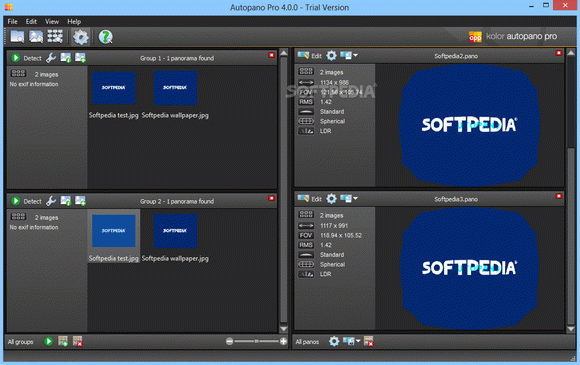

- #Autopano video pro 2 workflow mac os
- #Autopano video pro 2 workflow update
- #Autopano video pro 2 workflow software
- #Autopano video pro 2 workflow code
With Mac OS High Sierra, GoPro VR Player is now compatible with Mac, in addition to PC. The last new feature is the ability to preview 360 videos users are working on in GoPro VR player, compatible with Oculus and HTC Vive, to preview footage in a headset without exporting or leaving AVP.

#Autopano video pro 2 workflow code
There’s also a burn-in fuction to work with proxy files in post processing, and works with third-party solutions from companies like Timecode A numerical code that identifies videos by the hour, minute, second, and frame in the format HH:MM:SS:FF (eg. Users can choose their start time in the render box, or pass through the source timecodes. More support, which allows users to directly import videos from any genlocked rig into AVP without re-synching. Timecode supportĪnother key feature is timecode A numerical code that identifies videos by the hour, minute, second, and frame in the format HH:MM:SS:FF (eg. Now, its compatible with all rigs with 3 cameras or more, but results may vary based on overlap between cameras.
#Autopano video pro 2 workflow update
When the update was initially announced, AVP 3’s D Warp feature was only compatible with the Omni rig. The tool aims to minimize post-processing time by correcting stitching errors due to parallax The optical effect where an object’s position appears to differ when viewed from different positions, i.e. More compensation algorithm, D Warp, has expanded support for more camera rigs. Feature image from “Tales from the Edge” by Jeb Corliss.AVP’s parallax The optical effect where an object’s position appears to differ when viewed from different positions, i.e.
#Autopano video pro 2 workflow software
So even if the raw file is 4K, the portion within your view might be closer to 1080.Īnd, once you’ve got what you want, you’re all set to upload.ĭisclaimer: The images for this lesson were shot on a Theta S, which comes with proprietary software that stitches 360 clips together in real-time. With 360, you can only see a portion of the raw video. Use 4K if possible (the higher the better for video quality - Vimeo supports HDR uploads). We recommend using a less compressed format (like ProRes) since 360 accentuates compression artifacts. This will pull up the export panel.Īdjust your video settings. To do this, simply go to File > Export > Media or hit command+M on your keyboard. Namely, you need to add the appropriate metadata. Phase 5: ExportingĮxporting your 360 video is a little different than what you’d do with standard video. To use a stereoscopic source format, you can stack your video files with the left eye footage on top of the right.

The example above uses a monoscopic 360 video format, but Vimeo supports stereoscopic 360 video formats. Once selected, you’ll be able to tilt the camera 360 degrees with either your mouse or side dials on your Preview or Program monitor. Simply drop your equirectangular video into your timeline, select the Toggle VR Video Display button found in the menu in both the Preview or Program monitor. Previewing 360 video from Priemere Pro is also incredibly easy. It’s just important to know that if you want to add in visual elements (like graphics) you’ll want to use a third-party app (like After Effects paired with Skybox Studio) to make sure your graphics aren’t distorted in playback. Adobe’s integration with Vimeo, After Effects, and the rest of the Creative Cloud all make it a fantastic tool for 360 video editors. If you’re looking for editing software to get the job done, it’s Adobe Premiere Pro all the way. All of the same concepts like syncing, cutting, dissolves, and levels still apply to 360 video, you just have to get the hang of it. But, if you want the whole 360 or headset experience, you need to watch it in a player or app that supports 360 - like Vimeo.Īs you’ll see in video tutorial above, editing 360 video is actually pretty similar to editing standard video. You can also watch unrendered equirectangular footage on any standard video player. This file format even allows your aspect ratio to vary frame to frame, giving you a nice amount of flexibility when shooting. There are a few different types of 360 video formats, but equirectangular is the most popular, universal, and user-friendly format out there.Įquirectangular essentially manipulates 360 video into a rectangular format - reminiscent of HD or 4K footage. Autopano also allows you to stabilize your video, and correct the 360 rotation inside Premiere Pro (via Autopano’s integration). It lets you quickly stitch footage together from multiple cameras. In many ways, Autopano is your 360 post-production one-stop shop. We recommend stitching with Autopano Video from Kolor, a subsidiary of the GoPro family. If you shot your 360 footage this way, you’ll need to stitch all that video together before you start editing. It’s typical to shoot 360 with a number of different frames or cameras.


 0 kommentar(er)
0 kommentar(er)
